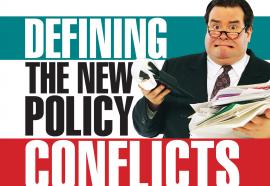Are They Betting The Company?
Eleven questions to ask senior managers about their risk-management objectives.
It is almost impossible to design an effective hedge program without first determining the exact objectives a company wants to achieve. Although this sounds obvious, it rarely is. Management usually can agree that the firm should hedge to reduce risk, but “risk” is too vague a term to justify hedging on its own.





